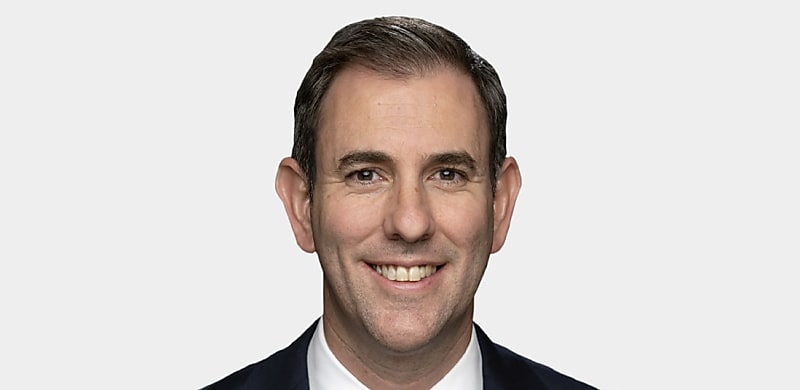
Treasurer Jim Chalmers has said the government is not “considering” banning LRBAs in SMSFs, despite the Greens’ push to do so.
On Tuesday (20 May), federal Treasurer Chalmers was asked by journalists whether Labor would consider banning limited recourse borrowing arrangements (LRBAs) in exchange for the Greens backing the Division 296 legislation in Senate. The legislation, set to take effect from 1 July 2025, will introduce an additional 15 per cent tax on the earnings of superannuation balances exceeding $3 million.
The question was posed, given that Labor had sought to ban LRBAs in self-managed super funds (SMSFs) in 2019 due to concerns that they were overheating the property market.
However, Chalmers confirmed that this policy was not on Labor’s agenda now.
“That’s not something that we’ve been considering. The point that we’ve made on a number of occasions since the election, the parliament will return at some point. It won’t be in the next few weeks. No doubt there’ll be discussions in the Senate about the superannuation changes but those discussions haven’t begun,” he said.
“It’s not our intention to resurrect all of the policies from three elections ago. We took our agenda through the election, including the changes to superannuation tax concessions to make very generous concessions slightly less generous, but still generous. We would like to see that legislated in the Senate. We’ve not had any discussions about any of the changes that the other parties would like to see in the Senate.”
The Greens previously said that if the government wanted to pass the Better Targeted Superannuation Bill through Parliament, it would have to consider banning the use of LRBAs for self-managed super funds, noting that they have a negative impact on the residential property market.
As reported by The Adviser sister brand SMSF Adviser, the SMSF Association said in its submission to the Senate standing committee on economics last year that this was “misinformation”.
“These [myths] persist despite empirical data clearly illustrating that the concentration of SMSF investment in residential property, in relative terms, is very low,” it said.
“Further, the level of gearing in SMSFs under the limited recourse borrowing arrangements (LRBA) is another area surrounded by misinformation. The use of LRBAs is subject to stringent rules and regulatory oversight. Greater understanding of these two elements demonstrates why these are not factors of significant influence on the accessibility, and affordability of residential housing.”
The SMSFA said direct property investment allows for investment diversification and choice for SMSF trustees and reiterated that this is also an investment choice available to the larger APRA-regulated superannuation funds, although usually in large-scale projects rather than an individual house, unit, or apartment.
Peter Burgess, SMSFA CEO, said when the Greens raised the issue last year that he believes LRBAs are being used as a “stalking horse” by people who think SMSFs are “an anathema”.
“Once again, critics have hung their hat on the Financial System Inquiry (FSI) report that was handed down in December 2014 recommending that LRBAs be abolished – a recommendation the government chose to ignore,” he said.
“Since then, we have had significant changes to the advice sector, a royal commission and a number of reforms that have substantially reshaped financial advice as a profession.”
Furthermore, he said, two reports from the Council of Financial Regulators in 2019 and 2022 have examined the evidence and concluded that LRBAs are not a threat to the system.
He said the 2022 report “established a clear baseline for monitoring risks relating to LRBAs in the superannuation system” and demonstrated “that borrowing by SMSFs through LRBAs has not posed a material risk to the superannuation system or broader financial system since it was first permitted in 2007”.
“Although over the past 10 years there has been an upward trend of SMSFs adopting LRBAs, the proportion of SMSFs using LRBAs is showing signs of stabilising or slightly decreasing in recent years. Only 11 per cent of SMSFs have an LRBA and LRBA borrowings represent just 2.7 per cent of total assets for the sector,” Burgess said.
The ATO’s annual statistics for 2021–22 showed that SMSF investment in residential property, both directly and through LRBAs, stood at $76.9 billion. With Cotality (formerly CoreLogic) valuing Australia’s residential market at $10.8 trillion, it means SMSFs hold about 0.7 per cent of the market.
“Since LRBAs became an investment tool in 2007, they have been mired in controversy, a convenient whipping boy for those with an axe to grind against SMSFs,” Burgess said.
Alternative methods of taxation rejected
Meanwhile, Assistant Minister for Treasury Andrew Leigh said the government had looked at alternative approaches to making the superannuation system fairer but said they were “too expensive”.
Speaking on 2CC Radio in Canberra, Leigh said the alternative approaches “are incredibly expensive” and “would come at the expense of all members, not just those with high balances”.
Leigh said the proposed $3 million super tax was “the simplest approach” and said alternative approaches would require “a rejigging of the super system which would be expensive for all members”.
“Our aim is to ensure that those top 0.5 per cent of people pay a slightly higher rate of tax. They’re currently paying a 15 per cent tax rate, which will go to a 30 per cent tax rate. Still below what they would earn elsewhere,” Leigh said.
When asked about whether the government’s plan to tax unrealised gains was an equitable approach, Leigh said this government is “proceeding consistent with the way in which the former Coalition government made changes to superannuation”.
“They made some changes to curtail the top end superannuation tax concessions,” Leigh said.
“But our changes are very modest. They’re simply going to apply a concessional tax rate. You will still be paying a lower tax rate on super than you would if this was money just invested in the share market.”
Leigh reiterated the government mantra that the proposed legislation has been through “three rounds of consultation” and said “this is the approach that has been recommended to us, and I think it’s really important to recognise that this is a change which applies to just 0.5 per cent of people”.
“So, 99.5 per cent of Australians are going to be unaffected by this change. Their lives will continue as usual and it responds to a concern that I think people have had for many years that superannuation tax breaks weren’t fair and too much benefit was going to those with multi‑million-dollar superannuation accounts,” he said.
He said that the proposals have been in the Parliament for the better part of two years.
“We’ve taken them to an election. I’ve got to say I don’t get stopped in the street by people saying, ‘Well the real problem is that Labor’s trying to increase the tax rate on people with more than $3 million’,” he said.
“I don’t think people need to be concerned that they will be paying a higher rate of tax than they would outside the super system. Super will still be concessionally taxed and we’re doing it the way in which Treasury has recommended because that’s the simplest path forward and the lowest cost path forward.”
Borrowing through SMSFs to purchase property has been growing in popularity recently, particularly amid higher serviceability barriers, strong returns, and uncertainty around retirement policy.
Speaking to The Adviser, Nicholas Wilcox, director and finance broker at Sydney-based brokerage Blue Crane Capital, said that interest rate pressure had pushed would-be investors to their buying limits and tightened serviceability, meaning purchasing through an SMSF has gained in popularity.
“I have clients who have gone down the property investing path and a few still want to buy more property,” Wilcox said.
“[An SMSF] gives clients another option. They are looking at their fund and saying, ‘I’ve got $200,000 growing at five per cent a year. I think property may be able to outperform that.”
You can find out more about the trends in SMSF borrowings in the June edition of The Adviser magazine. Sign up to become a Premium Member to receive the print magazine and never miss an edition!
